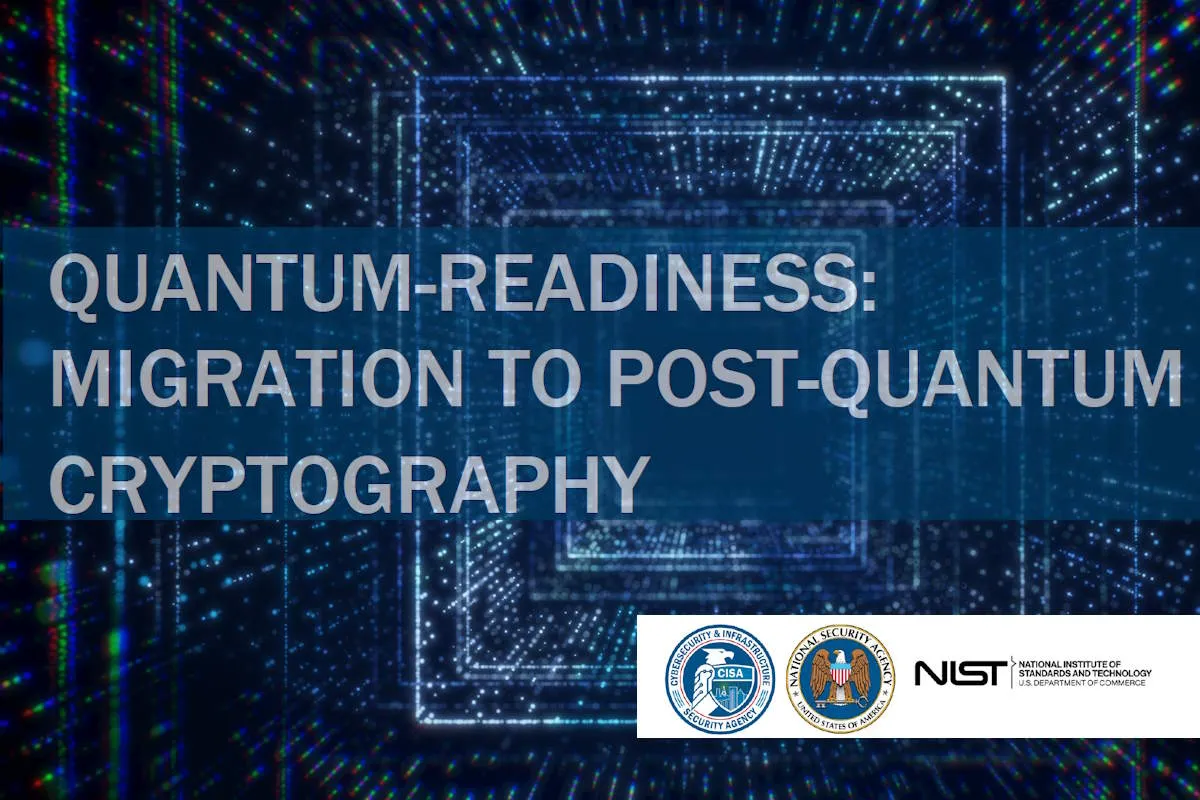New Algorithmic Standards And Migration Plans Accelerate Post-Quantum Cryptography's Growth To A Billion-Dollar Market

Table of Contents
The Urgent Need for Post-Quantum Cryptography
The Threat of Quantum Computing
Quantum computers, unlike classical computers, leverage quantum mechanics to perform calculations at speeds exponentially faster than their predecessors. This unparalleled processing power poses a significant threat to currently used public-key cryptography algorithms. RSA and ECC, the cornerstones of securing online transactions and sensitive data, are particularly vulnerable. A sufficiently powerful quantum computer could decrypt data protected by these algorithms in a matter of hours or even minutes, rendering our current security measures obsolete.
- Financial transactions: Bank accounts, investment portfolios, and payment systems are at risk.
- Government secrets: National security information and classified documents are highly vulnerable.
- Medical records: Patient privacy and sensitive health information could be compromised.
This looming "quantum threat" necessitates a swift transition to quantum-resistant cryptography, ensuring cryptographic agility in the face of this technological advancement. Ignoring this threat leaves organizations susceptible to devastating data breaches and significant financial losses.
The Growing Awareness of Quantum Risks
Awareness of the quantum threat is rapidly increasing among governments and businesses worldwide. This heightened awareness is driving the demand for post-quantum solutions and fueling the market's expansion.
- Numerous reports from cybersecurity firms highlight the urgency of preparing for a post-quantum world.
- Major cybersecurity conferences dedicate sessions to PQC, underlining its importance for future-proof security.
- Governments globally are initiating programs and investing heavily in research and development to ensure quantum-safe security.
The shift towards proactive cybersecurity preparedness is undeniable, and PQC is at the forefront of this critical evolution.
Standardization Efforts Driving PQC Adoption
NIST's Post-Quantum Cryptography Standardization Process
The National Institute of Standards and Technology (NIST) has played a pivotal role in driving PQC adoption through its rigorous standardization process. This multi-year effort involved evaluating numerous algorithms and selecting the most promising candidates for widespread implementation.
- CRYSTALS-Kyber: A key encapsulation mechanism (KEM) known for its efficiency and security.
- FALCON: A digital signature algorithm (DSA) offering a good balance between security and performance.
- SPHINCS+: A digital signature algorithm known for its strong security guarantees, even in the face of advanced attacks.
The selection of these algorithms through the NIST PQC standardization process provides crucial clarity and direction for industry adoption, fostering trust and encouraging widespread implementation of standardized post-quantum cryptography.
Global Standardization Initiatives
The standardization efforts extend beyond NIST, with significant contributions from other international bodies such as ETSI and ISO. This collaborative approach ensures global interoperability and accelerates the market's growth by establishing common standards for quantum-resistant cryptography.
- These organizations work together to create consistent standards and guidelines.
- Collaboration facilitates a smoother transition to PQC across various sectors and geographical regions.
- This global harmonization significantly reduces fragmentation and enhances the effectiveness of international PQC standards.
Migration Plans and Implementation Strategies
Challenges in Migrating to PQC
Migrating to PQC presents significant challenges for organizations. The process is complex, requiring careful planning, extensive testing, and substantial investment.
- Interoperability: Ensuring seamless integration with existing systems is a major hurdle.
- Legacy system integration: Updating or replacing outdated infrastructure can be costly and time-consuming.
- Key management: Managing keys for both classical and post-quantum algorithms requires careful attention.
Successfully navigating these challenges requires a well-defined PQC migration strategy and a clear understanding of the implications of cryptographic modernization.
Practical Implementation Steps
Implementing PQC effectively requires a structured approach. A phased implementation, starting with pilot programs, is recommended.
- Risk assessment: Identifying critical systems and data requiring immediate protection is the first step.
- Vendor selection: Choosing reliable vendors offering tested and secure PQC solutions is essential.
- Thorough testing: Rigorous testing is vital to ensure seamless integration and optimal performance.
By following a comprehensive PQC implementation roadmap and adhering to best practices for PQC deployment, organizations can effectively transition to a post-quantum secure environment.
Market Growth Projections and Economic Impact
Market Size and Growth Forecasts
The PQC market is experiencing exponential growth, driven by the increasing awareness of quantum computing threats and the availability of standardized algorithms.
- Market research indicates a significant increase in market value over the coming years.
- The compound annual growth rate (CAGR) is projected to be substantial.
- Key market segments include financial services, government, healthcare, and technology.
The substantial PQC market growth reflects the global urgency to adopt quantum-resistant cryptography.
Investment and Innovation in PQC
Significant investments are being made in PQC research, development, and commercialization. This signifies a strong belief in the long-term potential of PQC technology.
- Numerous companies are actively developing and marketing PQC solutions.
- Government funding is supporting research and development efforts.
- Venture capital is flowing into promising PQC startups.
This considerable PQC investment is driving innovation and ensuring the availability of robust PQC solutions for various applications.
Conclusion: Securing the Future with Post-Quantum Cryptography
The urgency of adopting Post-Quantum Cryptography is undeniable. The standardization of algorithms, while challenging to implement, is a crucial step in securing the future against the quantum threat. The significant market growth and substantial investments highlight the importance of proactive measures. To prepare for the post-quantum era, organizations must act now. Begin assessing your vulnerabilities, develop a migration strategy, and adopt post-quantum cryptography solutions. Don't wait until it's too late—invest in post-quantum cryptography and safeguard your valuable data from the inevitable quantum revolution.

Featured Posts
-
 March 20th Elsbeth Update Season 2 Episode 16 Release Date And News
May 13, 2025
March 20th Elsbeth Update Season 2 Episode 16 Release Date And News
May 13, 2025 -
 Hostage Fathers Message Of Strength To His Son
May 13, 2025
Hostage Fathers Message Of Strength To His Son
May 13, 2025 -
 Tory Lanezs Lawyer Under Fire In Megan Thee Stallion Case
May 13, 2025
Tory Lanezs Lawyer Under Fire In Megan Thee Stallion Case
May 13, 2025 -
 Ghaziabads Heat Advisory Safety Guidelines For Outdoor Workers In Noida
May 13, 2025
Ghaziabads Heat Advisory Safety Guidelines For Outdoor Workers In Noida
May 13, 2025 -
 Kakanwil Papua Ajak Masyarakat Dukung Persipura
May 13, 2025
Kakanwil Papua Ajak Masyarakat Dukung Persipura
May 13, 2025
